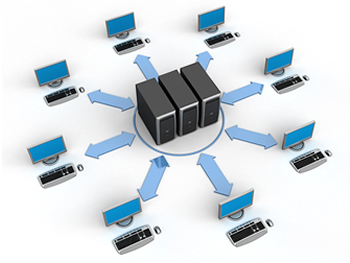Technology be useful in Business
02/11/2011 17:12
A days there are different technology, which are emerging in the field, the way generations are changing, time is changing, furthermore, businesses are also expanding.
Due to these factors, there is a need of versatile technology, which will enhance your business, manage your time and be effective enough to handle your cost.
There are two technologies, which enhances the business capability and caliber -
1. Vitria Technology
2. Legacy Migration
Vitria Technology - Provides business process integration products and solutions. The products include- A Web 2.0 - based business process management suite, M3O, which enable business analysts IT to directly model and managers / monitor uses it for managing and optimizing different processes.
Vitria Business Ware - A platform for general business process integration and business-to-business integration. The technology also offers software as a service, governance and operational intelligence, exception management, business event management and business process management solutions. Moreover, it also offers professional services, such as advisory services, staff augmentation, etc.
Vitria Technology has released M3O Operational Intelligence software Platform v3.2 for real-time analytical and intellectual businesses. It has been built for the quick use of real-time services; Vitria M3O facilitates business leaders to rapidly make informed decisions in time to capitalize on their business. M3O use cases that include advanced cyber security, SLA management, service assurance, customer experience management and insight into hidden business processes. With 10X speed increase, M3O's immediate logical engine addresses the most difficult CEP troubles, from advanced threat detection in virtual security to reputation management amidst the increasing variety and volume of social media data. M3O technology also release 3.2, which can handle the data faster, but can also evaluate more complex patterns making possible to the quick exposure of new types of threats and opportunities from volumes of streaming data. Therefore, M3O offers immediate opportunity assessment, behavior-based analysis, statistical trending and scoring- thus, extending the flexibility of equipped intelligence far beyond the capabilities of most CEP products.
Legacy Migration - The Legacy Migration offers clients to modernize their applications with a structured process, which leverages the capabilities provided by new technologies and reduces risks. Migrating Legacy Systems includes methods to identify the correct solution and approach for the particular legacy application, tools and templates to accelerate the modernization and method to manage the requirements. For business, organizations legacy modernization is the best technology with effective alternative solutions for business functions.
There are many agencies and organizations, which offers legacy migration services that maintains and support legacy systems. The legacy system services also helps in further migrating the old data into to the future systems by modernizing the solutions. Quality methods are provided with high services, so that you are reassured that transferring the legacy will not cause any disruptions or unnecessary problems in your business. Legacy Modernization takes less investment in money and time. Allows you to extend and reuse the data and functionality of your existing applications also manages your business risks of losing any data.
Hence, these technologies are useful and necessary to equip and enhance your business productivity with best software’s.





